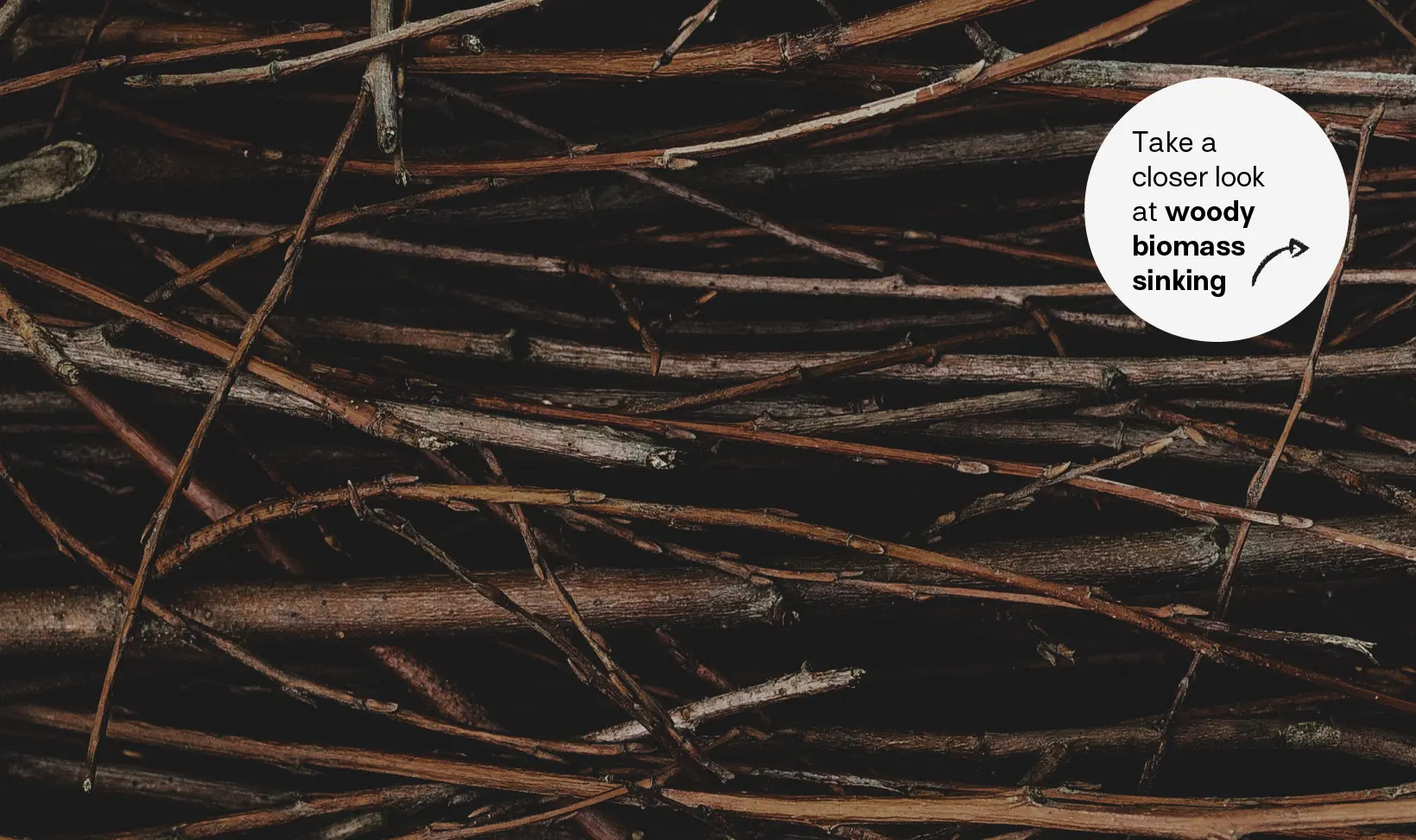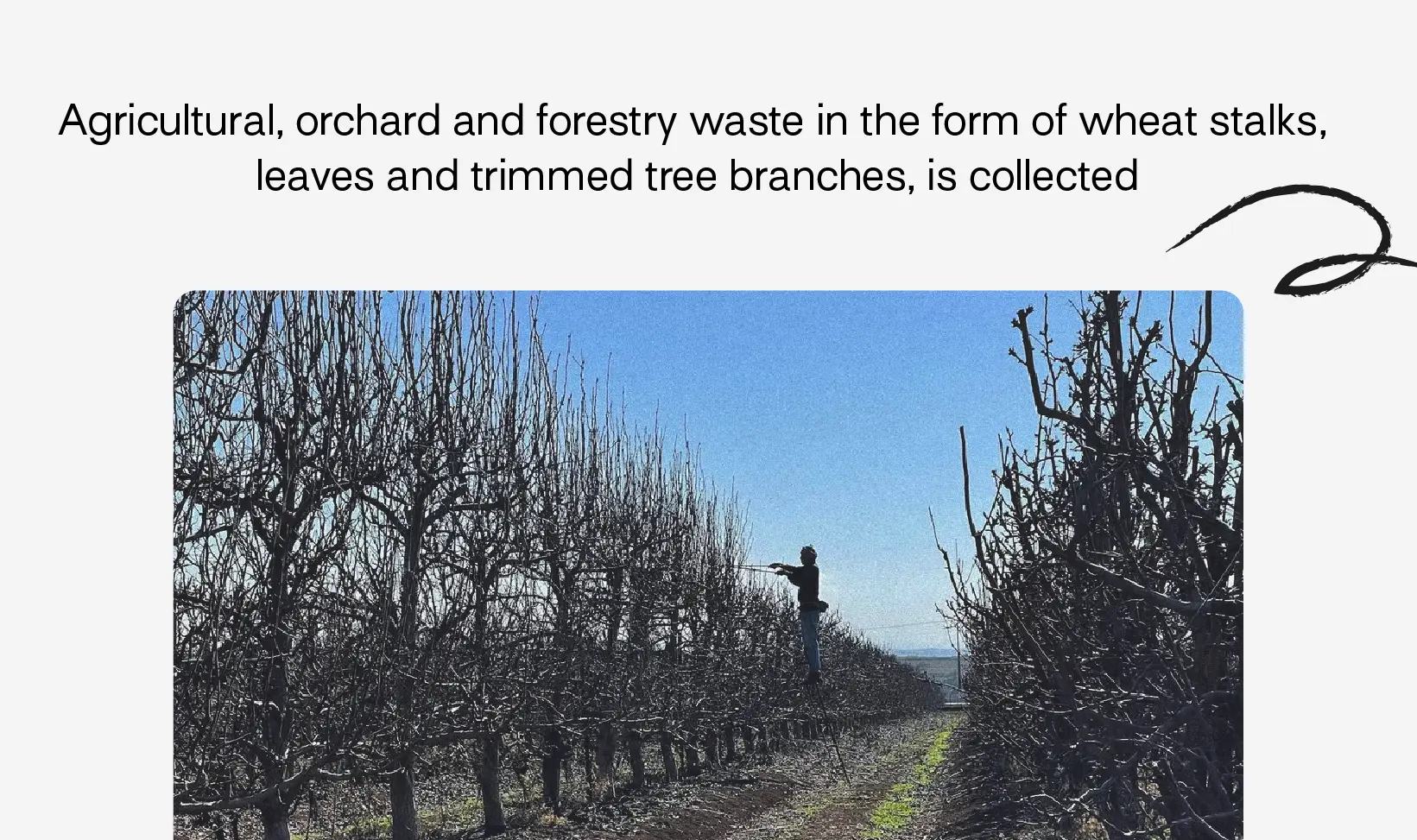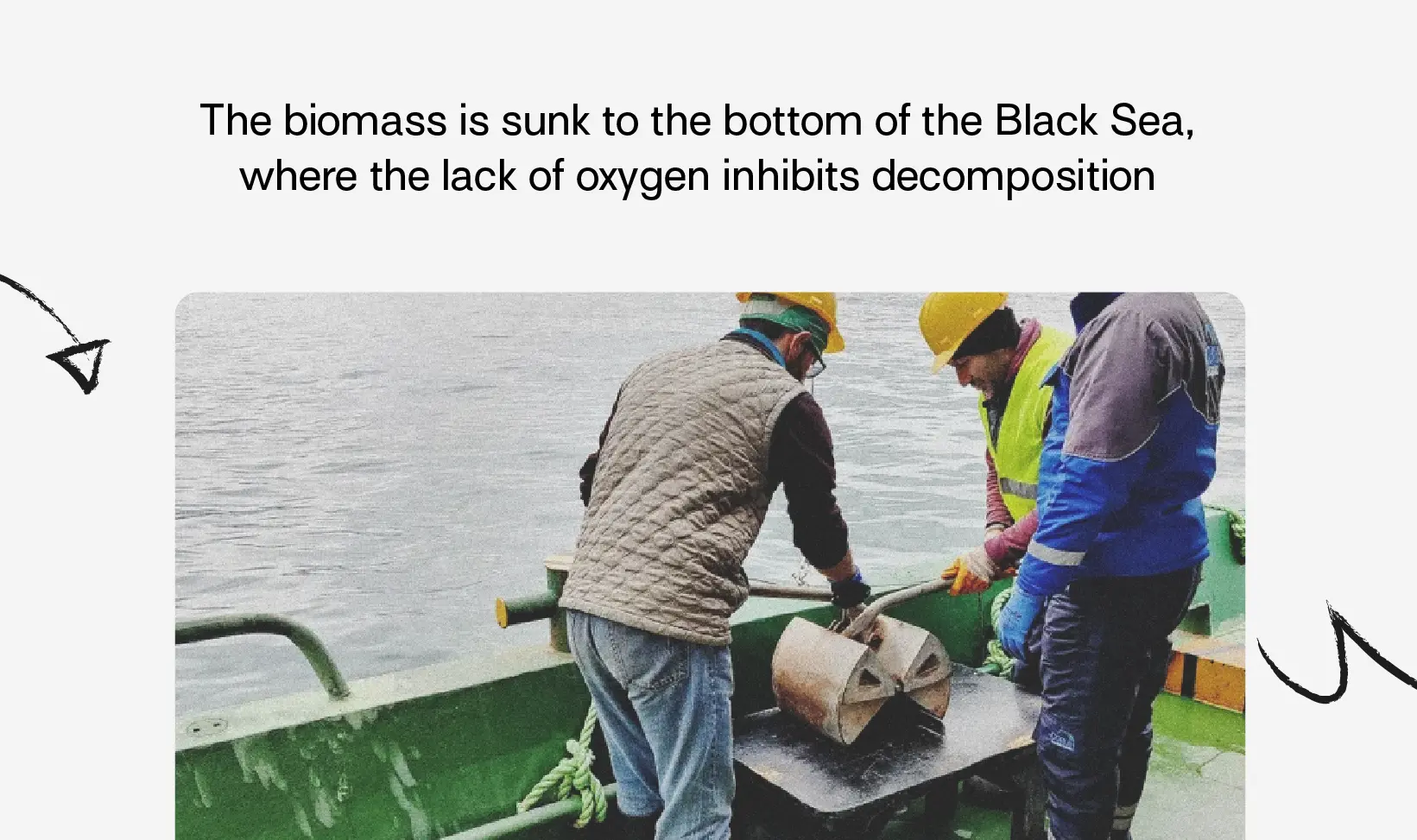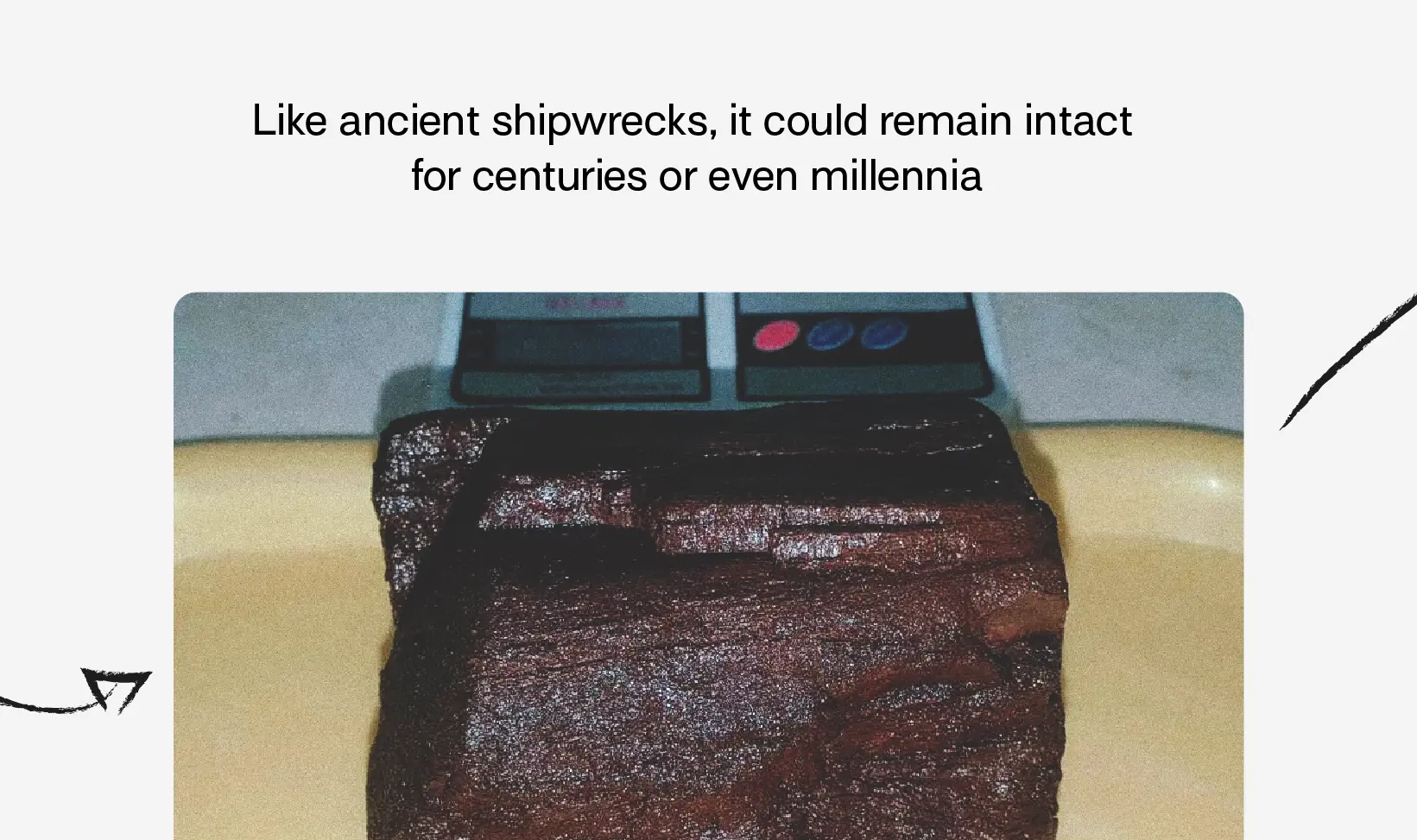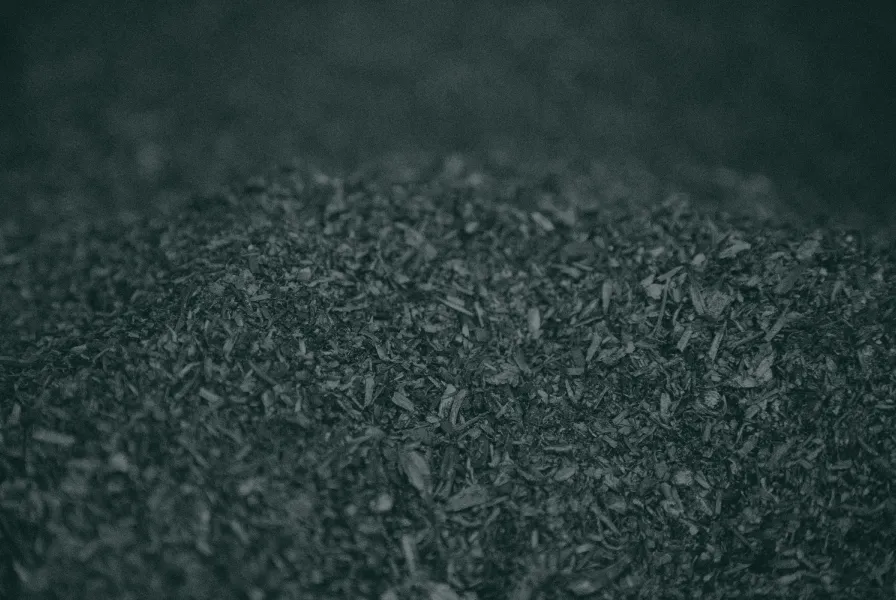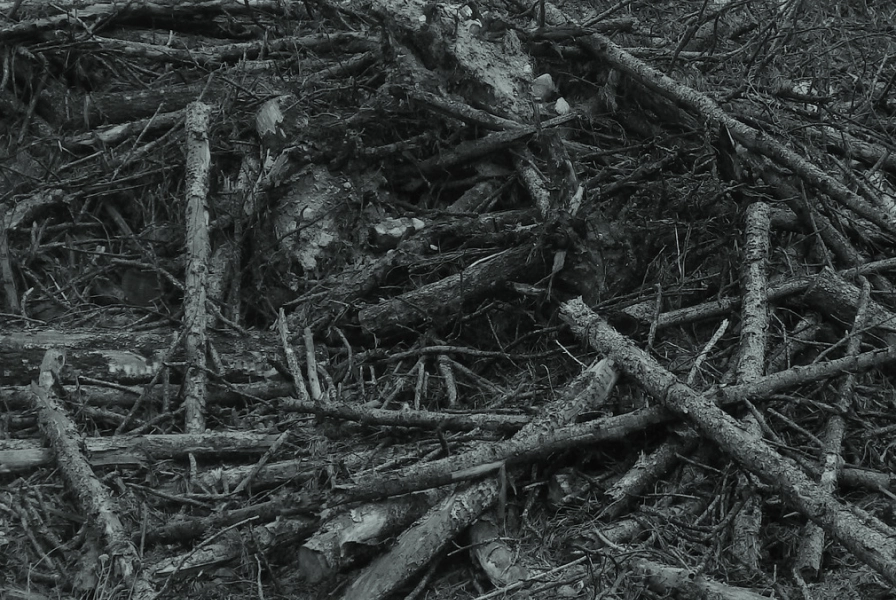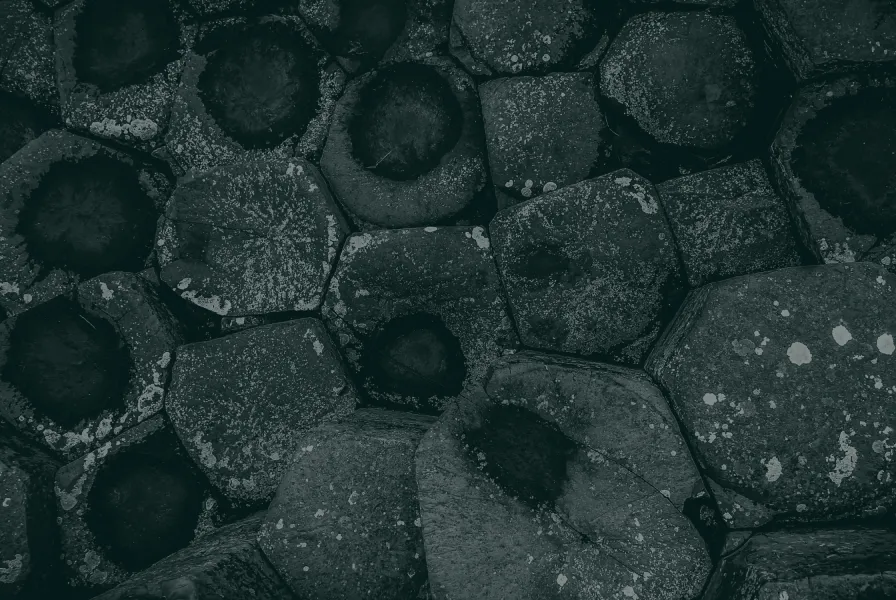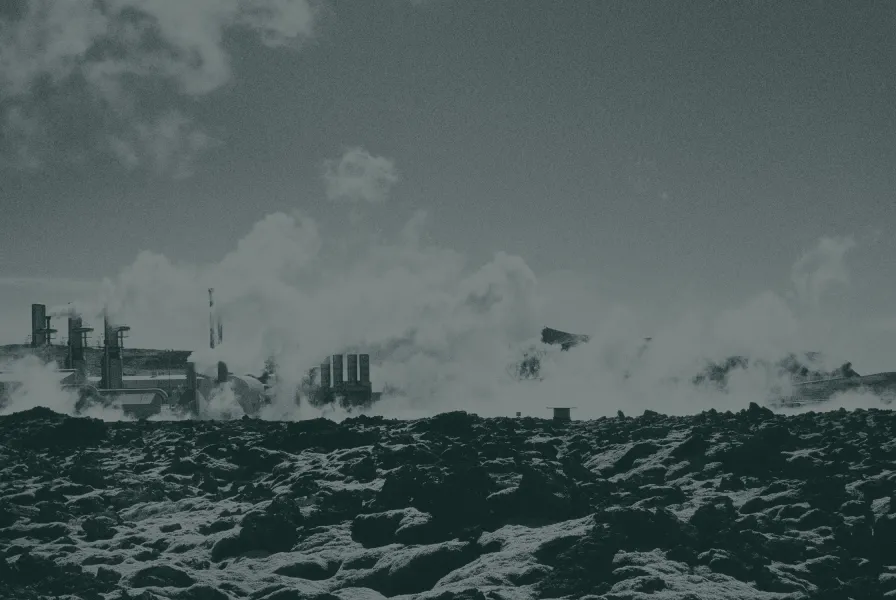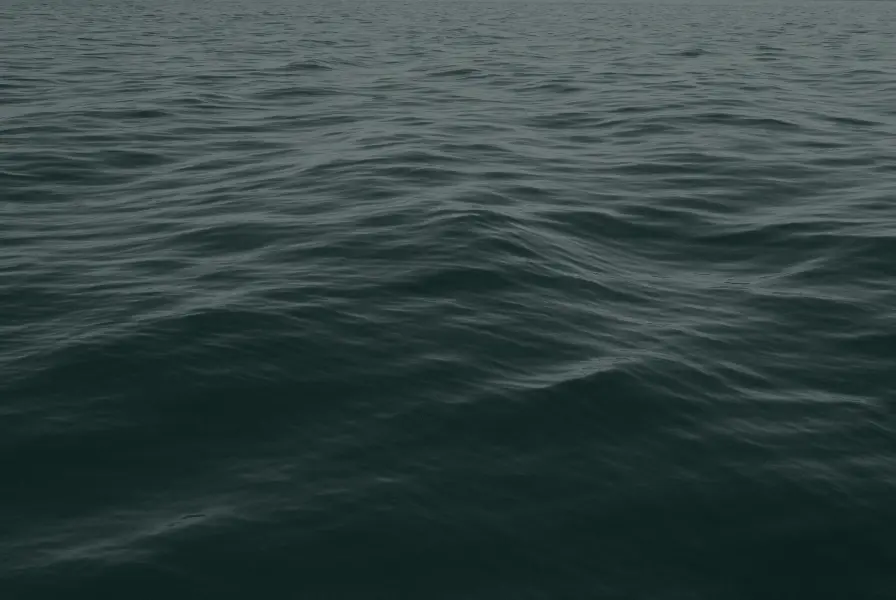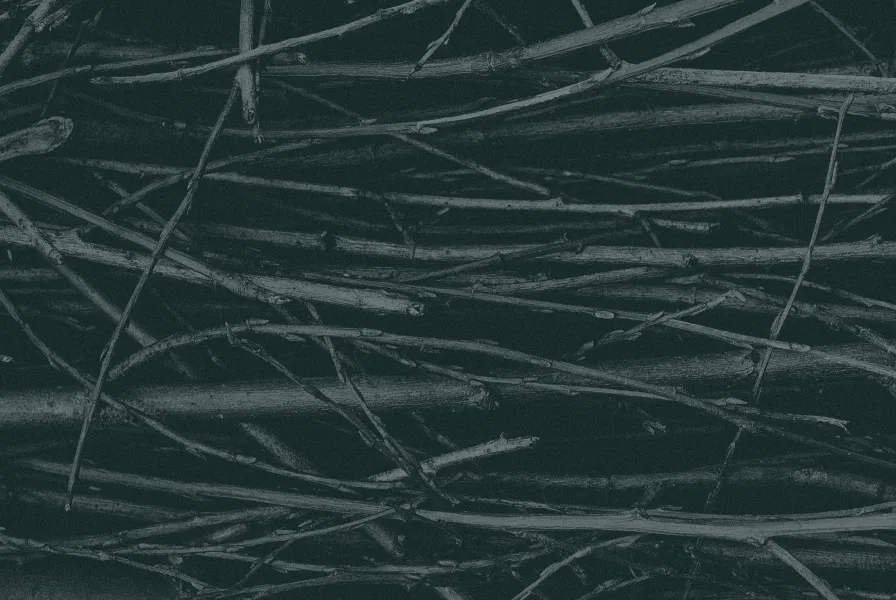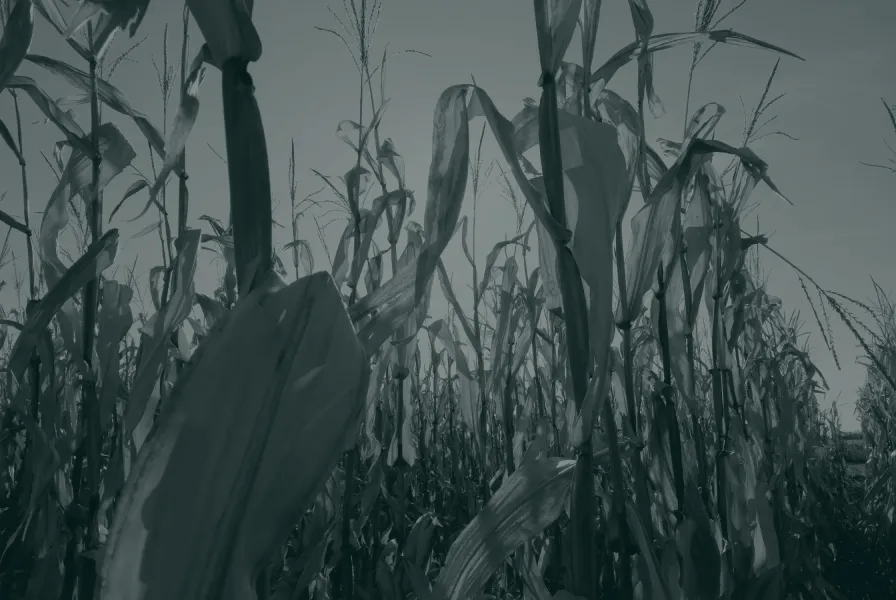Overview
Woody biomass sinking is a method that sequesters carbon by submerging leftover woody materials in the oxygen-depleted layer of the Black Sea (the anoxic layer), which is approximately 2 kilometers deep.
In this unique environment, the woody biomass remains preserved - the lack of oxygen means it doesn’t decompose. And it doesn’t disrupt the local ecosystem since there's no life other than specialized microbes.
Two sources of woody biomass are used: The first is forestry waste biomass collected from a hydroelectric reservoir or directly from forestry operations, addressing potential issues for dam operators and aquatic ecosystems. The second source consists of woody offcuts from fruit and nut orchards surrounding the Black Sea.
This sinking process is done by a crane that pushes the biomass deep enough for the sea’s pressure to take over, and the biomass sinks into the anoxic zone.
Activities are fully measured, monitored, and accounted for by an end-to-end Measurement, Reporting and Verification system, including deep-sea sensors, cameras and truck-mounted devices, providing complete visibility from the field to the bottom of the sea.
